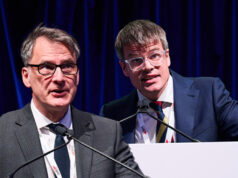
Researchers from CBSET have defined the optimal tissue debulking protocol for treating in-stent restenosis with Boston Scientific’s Jetstream Navitus atherectomy device. The findings were disclosed at the CRT 2015 annual scientific meeting (21–24 February) in Washington, DC, USA.
The study (“Optimal number of runs using the Jetsream Navitus device to achieve maximum tissue debulking of in-stent restenosis in a porcine stent/balloon injury overstretch model”) determined that the Jetstream Navitus device achieved optimal tissue debulking after two blade-up runs, with no further gain in debulking after the second run. This study also confirmed that stent damage was minimal after the procedure, with no disruption to stent struts or stent integrity. Prior to this study, the number of runs needed to achieve optimal tissue debulking using the device was unknown.
“Now we may proceed to translate these findings into clinical data, with the goal that optimal tissue removal or debulking will translate into better patient outcomes and ideal coupling with adjunctive therapies such as drug-coated balloons. We believe that the optimal debulking process will give physicians the best acute procedural results and hopefully better long-term outcomes,” concluded the study’s principal investigator, Nicolas W Shammas, president and research director, Midwest Cardiovascular Research Foundation.
“The revascularisation of peripheral arteries with significant plaque burden remains technically challenging. Debulking has emerged as an important tool to decrease the volume of the atherosclerotic plaque. Our study provides important guidance on atherectomy procedures designed to contribute to superior primary patency after revascularisation while minimising the risk of stent damage or other complications,” said Peter Markham, president, chief executive officer and a co-founder of CBSET.













